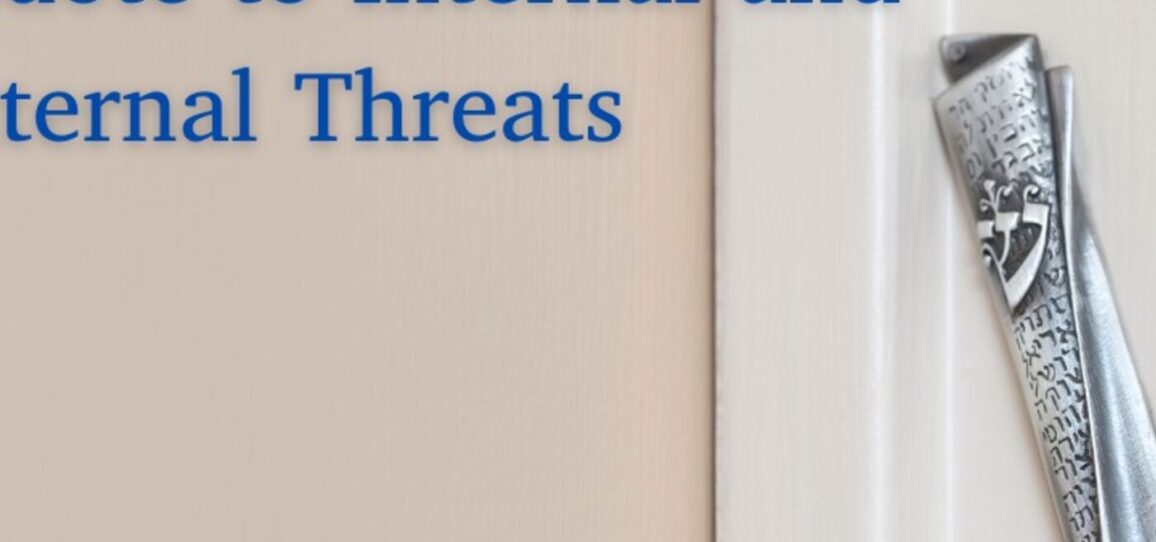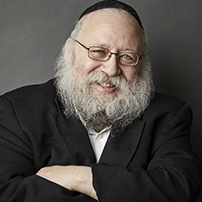
Sichon and Og
The Jewish nation stood on the cusp of their conquest of Canaan, situated in close proximity to the Moabite Kingdom. Balak, the king of Moab was terrified of the Jewish nation and hires Bilam, the heathen prophet to curse the Jews.
The Torah states:
“Balak son of Tzippor saw all that Israel had done to the Amorite. Moab became very frightened of the people…”
Balak was frightened because of the Jewish people’s defeat of the Amorite Kingdom.
The Midrash, cited by Rashi, explains that Balak’s fear was caused by seeing how the Jewish nation handily defeated the two powerful kings, Sichon the Amorite and Og the Bashanite.
In Rashi’s words:
“He [Balak] said, ‘these two kings that we put our trust in could not stand up to them, how much more so us.’ This is why Moab was terrified.”
Sichon and Og were specifically hired to stand guard as an impregnable barrier to the Jewish nation’s conquest. If they were defeated no one could stop the onslaught of the Children of Israel.
The Evil Mezuzah
The Kabbalistic work, Megaleh Amukos describes these two kings as the evil counterpart of the Mitzvah of affixing a Mezuzah to our doorposts.
The function of the Mezuzah is to identify the home as one in which G-d’s presence is felt. This, in turn, helps to protect the home from both physical and spiritual negative influences.
King Solomon declares: “G-d has made one opposite the other.” This means that every phenomenon in the realm of goodness and holiness has a counterpart in the world of evil and impurity.
If the Mezuzah is what protects us from negative influences entering our homes, then Sichon and Og were the unholy barriers that would prevent the entry of holiness into the Land of Canaan. If they were not vanquished, the G-dly Jewish people would have been barred from entering the Promised Land.
The Megaleh Amukos finds this point hinted in the word vayagar-and they feared which numerically adds up to 213. This is an uncommon word for fear; usually the Torah uses the word vayira for fear. But the word vaygar is the same gematria as Sichon and Og, whose demise was the cause of Moab’s apprehension.
Furthermore, there is a Kabbalistic custom to write three words cuzu b’muchsaz cuzu on the back of a Mezuzah. These three words are a coded form of the three words “Hashem Elokeinu Hashem-[G-d, G-d is our G-d, G-d]. Each letter follows the letters of G-d’s name. For example, the letter chof is substituted for the yud of G-d’s name, and so on.
These three coded words on the back of the Mezuzah also add up to 213, alluding to the notion that Sichon and Og were the negative counterparts of a Mezuzah. And their defeat meant that they would be incapable of preventing the children of Israel from entering the Promised Land laden with all of their powerful G-dly light.
This explanation of the Megaleh Amukos can provide an explanation for the custom to write those coded three words on the back of the Mezuzah. It may be our way of alluding to the fact that the “backside” of our holy Mezuzah is the impure version of Sichon and Og.
Two and a Half Tribes
The Chassidic work Bnei Yisaschar writes that the above explains why the area conquered from Sichon and Og was settled by two and a half tribes; the tribes of Reuven, Gad and half of the Menashites. Each tribe is said to represent and channel G-d’s name, the Tetragrammaton, which is numerically 26 [2 x26=52] and the half tribe channeled half of G-d’s name [52+13=65], which is the same numerical value as the word Mezuzah [65]. These two and a half tribes represented the holy version of the Mezuzah that replaced the unholy version of the Mezuzah of Sichon and Og.
Two Functions of the Mezuzah
At this point one can raise the question: If the Mezuzah is the counterpart and antithesis of the twin forces of Sichon and Og, we must conclude that there are also two functions of the Mezuzah as well. Indeed, when the children of Israel were preparing for the final plague of the death of the firstborn, they were told to place blood on the two doorposts of their homes, the precursor to the Mitzvah of affixing a Mezuzah on our doorposts. Those two doorposts paralleled the twin evil forces of Sichon and Og. We must conclude that our one Mezuzah (affixed to each doorpost) consolidates those two forces to vanquish the two disparate negative forces of Sichon and Og.
A contemporary Chassidic work, Lachai Ro’i describes two objectives of the Mezuzah: The first is to protect our home and the second is to protect us when we leave the home. This is based on the verse in Psalms: “G-d will protect you when you leave and when you enter.”
The Torah describes how Sichon left his city to wage war with the Bnei Yisroel. Sichon therefore represents the negative power to counter the external positive forces. Og, by contrast, attempted to cast a mountain on the heads of the children of Israel where they were situated (Talmud Berachos 54b]). Thus, Sichon, the evil Mezuzah, lurks on the outside, whereas Og’s power infiltrates our homes. Our holy Mezuzah counters both of these influences.
One may suggest that there are two other forms of negative energy that the Mezuzah counters and neutralizes. Sichon, the Torah states ruled in a city called Cheshbon. Cheshbon is cognate to the word in Hebrew for thought. Thus Sichon contaminates our thought process and exposes us to negative ideologies.
And this connects to the idea that Sichon harms us when we are outside our homes. At that time we are most vulnerable and receptive to alien philosophies because we are not in our secure home environment. Thus Sichon who leaves his home to confront us outside is defeated by our Mezuzah that we affix on the outsides of our homes.
Og, the Torah tells us waged war with the children of Israel in a place called adrei, which is an Aramaic word for arm, signifying action. Og attempts to influence and change our behaviors. This negative force is most evident in our homes where most of Judaism is practiced. Thus the Mezuzah is slanted inward to indicate that it protects our homes from Og’s negative influence.
Thus, when we affix a Mezuzah to our doorposts it defeats the two negative forces of Sichon and Og, because it reinforces our G-dly mindset and simultaneously strengthens our commitment to Jewish practice.
A Mezuzah in Time
Just as there is a Mezuzah in space, so too is there a Mezuzah in time. For example, the work, Bnei Yissachar, cited above, maintains that the month of Elul is the Mezuzah for the forthcoming year. It fortifies us spiritually to make the new year a holy year.
One can take this approach of a Mezuzah in the realm of time and apply it to all of human history. Our generation, the final generation before the coming of Moshiach, is the Mezuzah of history, for we are about to experience the Final Redemption and enter the Promised Land. In the process, we have to overcome the final obstacles posed by our existence in exile, which include both the Sichon and Og threats.
On the one hand, we are negatively influenced by the prevalent Galus mindset, which is at odds with Jewish values and beliefs. At the same time, there are many formidable obstacles to our Torah observance. These two negative forces, represented by Sichon and Og must be defeated by the literal observance of the Mitzvah of Mezuzah. But, in addition, our efforts today at fortifying Jewish beliefs, values and ideals coupled with a strengthening of Mitzvah observance, constitute the ultimate Mezuzah force that will prepare us for the coming of Moshiach.
The Human Mezuzah
If there is a Mezuzah in space and time then there is also a human Mezuzah. That is Moshiach, who spreads G-dly awareness to us and the entire world, prepares us for and ushers in the Final Redemption.
This ties in with Bnei Yisaschar’s assertion that the two and a half tribes of Reuven, Gad, and half of Menasheh were the virtual Mezuzah who settled the area of Sichon and Og and thereby removed their insidious influence from the land. It is fascinating that if we add up the numerical value of Reuven, Gad and half of the tribe of Menashe it is the same gematria as Hamelech Hamoshiach-the King Moshiach!


